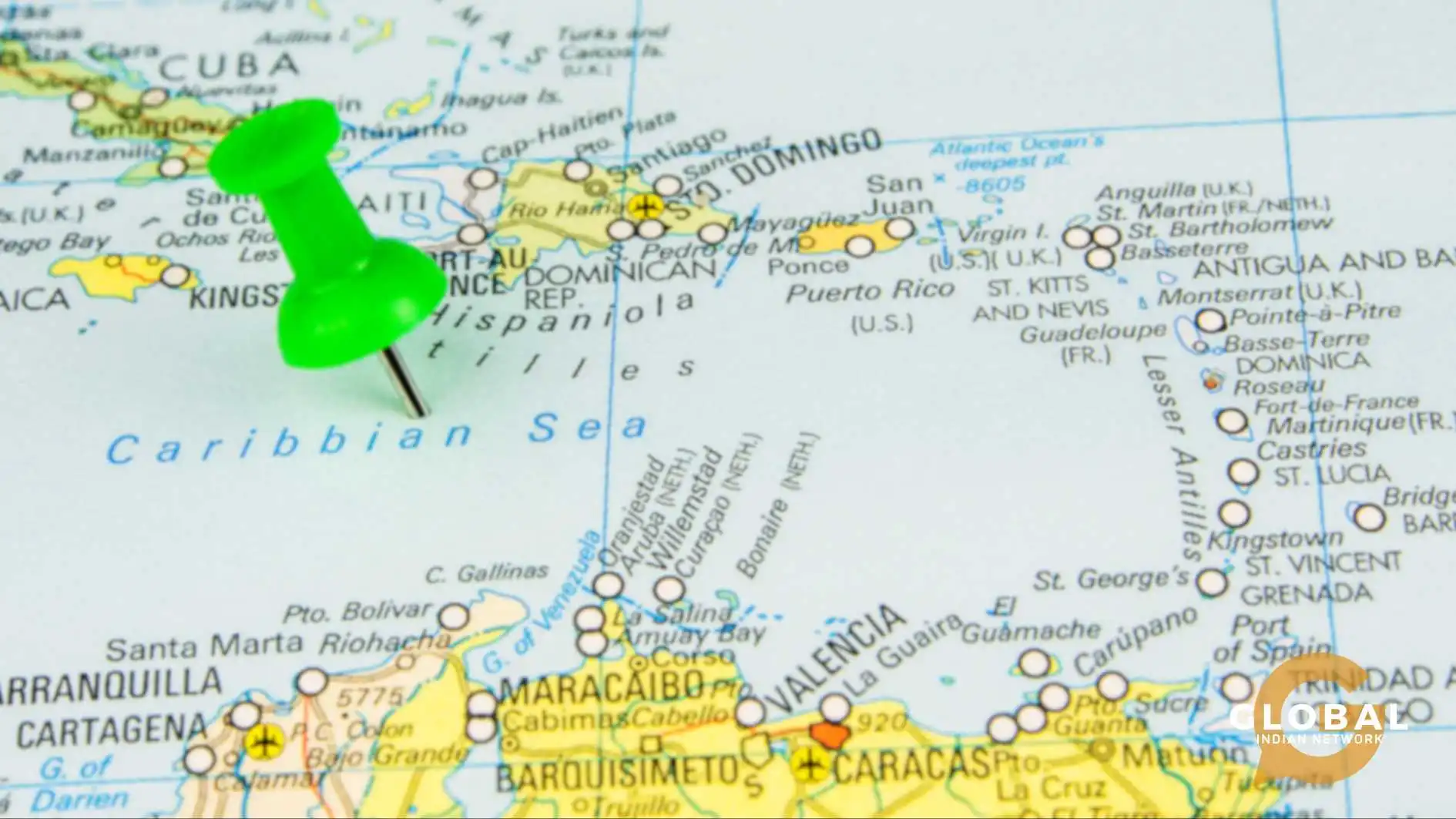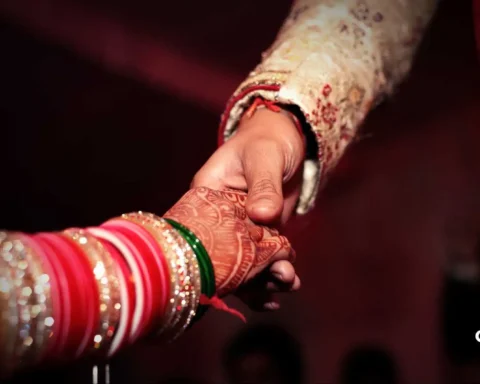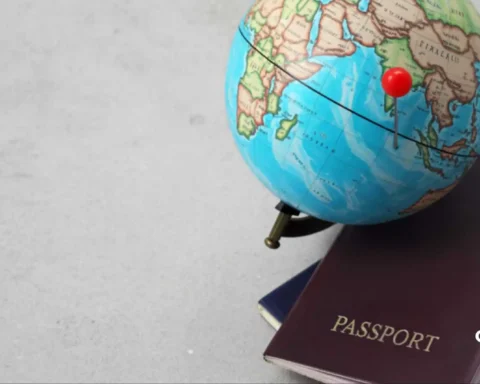The Caribbean Girmitiya countries, formerly British colonies, have a deep significance in the history of the Indian diaspora. In the 19th century and early 20th centuries, thousands of Indians were shipped under the Indian indenture system to work on Caribbean sugar plantations. This migration created enduring cultural, social, and political links between India and the Caribbean.
The Girmitiya lineage is a testament to the endurance of cultural blending and retaining close links with the home country. Observing their combined hardships, cultural continuities, and current-day diplomatic interactions between India and the Caribbean demonstrates how Girmitiya heritage continues to influence the contemporary diaspora community and enrich the dynamic Indian global identity.
Table of Contents
Why Caribbean Girmitiya Countries Are Essential to Understanding the Indian Diaspora Experience
The Indian indenture system, instituted in the 19th century after the abolition of slavery, deeply affected Caribbean societies. Indians, attracted by the promise of improved wages and conditions, were subjected to the brutal institution of indenture, brutal labour, poor living conditions, and systemic exploitation. Indenture was a well-rooted practice within European colonies and shared similar coercive elements with slavery.
From 1838 to 1917, more than 500,000 Indians, mainly from Uttar Pradesh, Bihar, and Tamil Nadu, were taken to the Caribbean. Their travels created lasting Indian-Caribbean linkages, making the Caribbean central to an understanding of the more considerable Indian diaspora experience. Present-day Caribbean Indians usually look to villages in Uttar Pradesh for their origins, preserving emotional and cultural links to the homeland.
The Girmitiya story of migration transcends the challenge; it is also one of adjustment and resilience through culture. Children of these workers held on to their languages, religious rituals, and food habits, which take root in all aspects of Caribbean life. Diwali, Holi, and Phagwa festivities are celebrated enthusiastically in Caribbean Girmitiya countries, replicating their Indian equivalents. Third, Caribbean cultures have successfully integrated Indian traditions into their nationalist imagination without a glitch, demonstrating the sustainable integration of cultures.
The Caribbean Girmitiya countries are also involved in diplomatic and cultural relations with India. Historians like Brij Lal, an expert in indenture history, and Raj Mohan, a recognized diaspora lobbyist, have highlighted comparative histories of the indentured colonies, building transnational narratives of migration, work, and cultural survival. Their work has illuminated the exploitation of indenture and its long-lasting effects on diaspora communities.

Cultural Influences and Traditions in Caribbean Girmitiya Countries
The Indian diaspora in the Caribbean has deeply impacted local cultures, with lasting impressions on language, music, religion, and cuisine. The Caribbean Girmitiya countries actively retain and celebrate these impacts, preserving their heritage and deepening their multicultural identities.
Language and Literature
The earliest migrants spoke Bhojpuri, Awadhi, and Hindi, which evolved into Caribbean Hindustani, a distinctive dialect that combined Indian and Caribbean linguistic characteristics. Although Hindi is no longer used in everyday life, it continues to be found in religious practices and folk songs. Authors like Rajendra Prasad and Brij Lal documented the Girmitiya experience so that their hardships and strengths are not forgotten in literature. Their books, with displacement and cultural hybridity themes, provide insightful readings of the diaspora community experience.
Music and Festivals
Indian musical genres, chutney and tassa specifically, have gained a niche in Surinamese and wider Caribbean society. With Bhojpuri lyrics and Caribbean rhythms, Chutney music is a syncretic form of Indo-Caribbean culture. Trinidad and Tobago’s Diwali and Guyana’s Holi are celebrations that the diaspora and local visitors enjoy, opening cultural exchange doors and strengthening Indian-Caribbean bonds. Suriname’s annual celebration of Indian Arrival Day, through performance and exhibition, remembers the diaspora in the region and welcomes world travellers.

Cuisine and Everyday Life
Indian food culture has deeply impacted Caribbean cuisine. Roti, dal puri, curry, and achar (pickles) are the essential foods that people eat. The daily existence of Caribbean Indians is a dynamic intermingling of Indian and Caribbean culture, testifying to the lasting heritage of the arc of indenture. Street food stalls in Georgetown, Port of Spain, and Paramaribo sell dishes that have unmistakable Indian origins, so food is a cultural bridge between India and the Caribbean.
How Caribbean Girmitiya Countries Preserve Their Indian Heritage and Identity
The Caribbean Girmitiya countries vigorously maintain and perpetuate their Indian heritage politically, culturally, and diplomatically. This mutual perpetuation grounds the next generation in their heritage. India has increased its interaction with Girmitiya countries through efforts by the Narendra Modi administration. Initiatives like the Pravasi Teerth Darshan Yojana allow diaspora community members of indentured heritage to travel to India, creating personal and cultural connections. This effort is a testament to India’s eagerness to interact with its diaspora community, honouring its historical importance.
The Indian Ministry of External Affairs is the prime agency for strengthening diplomatic relations. Cultural exchange schemes, trade organizations, and conservation activities of cultural heritage boost India-Caribbean relations. The Indian High Commissions of Trinidad and Tobago, Guyana, and Suriname regularly arrange Indian heritage celebration events to enhance bilateral ties.
Mosques, mandirs, and temples throughout the Caribbean are religious and cultural strongholds. The Trinidad and Tobago-based Sanatan Dharma Maha Sabha is one of the largest Hindu organizations in the Caribbean. It encourages Vedic education and performing religious festivals, thus continuing Indian spiritual culture.
Additionally, the Caribbean countries commemorate Indian Arrival Day to commemorate the first indentured labourers who arrived. It reminded people of the long history of the cycle of indenture and the achievement of the Girmitiyas in Caribbean society. Mandirs and cultural centers also provide language classes to keep Bhojpuri and Hindi alive among newer generations.
Historians like Brij Lal have worked assiduously to document the exploitation of indenture and the multifaceted histories of indenture colonies, bringing individuals from all over the globe to attention. Universities in Surinamese and Caribbean societies teach courses on the trajectory of indenture, keeping the region’s history alive and accessible to future generations. International conventions and transnational research projects bring the Girmitiya experience into the context of contemporary debates on migration worldwide.
RELATED ARTICLE: All You Need to Know About Indentured Labour: Origins, Conditions, and Significance
Conclusion
The Caribbean Girmitiya countries have an essential role in maintaining global Indian linkages by preserving and honouring the culture, history, and heritage of their Indian diaspora forebears. The legacy of the indenture arc of survival and cultural endurance continues to influence the rhythm of daily life in the Caribbean.
Through initiatives like the Pravasi Teerth Darshan Yojana and diplomatic outreach led by the External Affairs Ministry, India and the Caribbean further solidify their cultural and historical ties. The Indo-Caribbean-rich Caribbean Girmitiya nations constitute a significant link within the diaspora community chain of past, present, and future generations.

FAQs
Which Countries are Girmitiya?
Those nations to which Indian indentured labourers were sent during the British colonial regime are known as Girmitiya. They are Fiji, Trinidad and Tobago, Guyana, Suriname, Mauritius, South Africa, and the Caribbean and Pacific Islands.
Who Came to the Caribbean as Indentured Labourers?
Between 1838 and 1917, more than half a million Indians were taken to the Caribbean (primarily Trinidad and Tobago, Guyana, Jamaica, and Suriname) as indentured labourers to labour in sugar plantations following slavery.
Who is Called Girmitiya?
Girmitiya is the term used for Indian contract-bound workers erroneously named “girmits” (from the English word- agreement) and transported to labour in plantations of British colonies.









